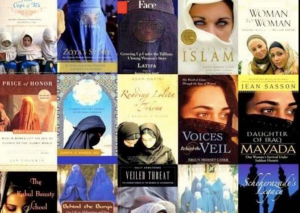There’s an unexpected signed op-ed in The Gray Lady defending hijab. Indian Muslim woman’s rights activist, Ayesha Nusrat reflects on the benefits off wearing hijab, two months after adopting it, in “The Freedom of the Hijab.”
I respect hijab, but don’t consider it fard (obligatory) today.
Nusrat makes some profound points:
In a society that embraces uncovering, how can it be oppressive if I decided to cover up? I see hijab as the freedom to regard my body as my own concern and as a way to secure personal liberty in a world that objectifies women. I refuse to see how a woman’s significance is rated according to her looks and the clothes she wears. I am also absolutely certain that the skewed perception of women’s equality as the right to bare our breasts in public only contributes to our own objectification. I look forward to a whole new day when true equality will be had with women not needing to display themselves to get attention nor needing to defend their decision to keep their bodies to themselves.
In a world besotted with the looks, body and sexuality of women, the hijab can be an assertive mode of individual feministic expression and rights. I regard my hijab to be a commanding question of “I control what you see, how is that not empowering” mixed with a munificent amount of authority emanating from the “My body is my own concern” clause. I believe my hijab gives me the right to assert my body, femininity and spirituality as my own and under my authority alone.
Back in 2004, I made some kindred observations on the occasion of a hijab ban in France: “When chosen freely, it is … a badge of empowerment, a radical blow against a world that objectifies women.”
Her piece is eloquent and thoughtful, even if I don’t find that it covers any new ground philosophically. There is one interesting aspect: Unlike most defenses of hijab by Muslims, she focuses on surprisingly instrumental arguments rather than its presumed inherent traits or blessings. The emphasis is put on hijab as a tool for dispelling stereotypes about Muslim women as opposed to it as an end in itself.
Yes, my hijab is a visual religious marker that makes it very easy for anyone to spot me in a crowd as a separate entity representing or adhering to a particular religion. This is all the more reason why, being a hijabi in the public arena is an escalating force that drives me to work in ways that would help break the undignified stereotypes, barriers and prejudices that my Islamic faith is relentlessly and irrationally associated with. As an extension of my personality and identity, it instigates me to challenge the misconception that Muslim women lack the bravery, intellect and resilience to challenge authority and fight for their own rights.
In a way, it seems like circular reasoning to me–i.e., I wear hijab because doing so helps me to attack stereotypes about Muslim women (who mostly wear hijab)–but that’s none of my concern and, besides, one can never fault somebody for being motivated by a sense of solidarity with others.
While I certainly appreciate its constructive message–which will no doubt inspire screams of outrage and bloody dhimmitude from the Islamophobe peanut gallery–the piece seems a bit like a bolt out of the blue and I wonder how convincing most people will find it. I’d love to know how this piece found its way to the New York Times opinion pages, which are legendarily difficult to get into. Is it responding to something I’ve missed in the news recently?













